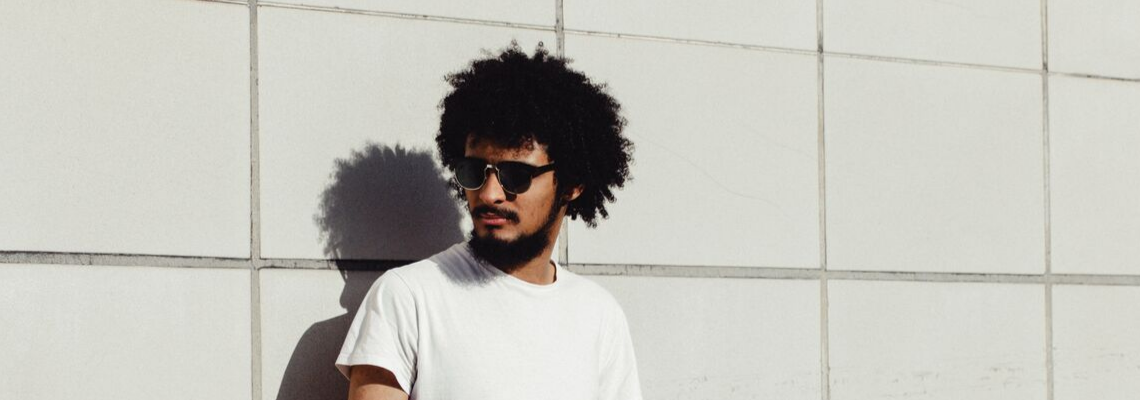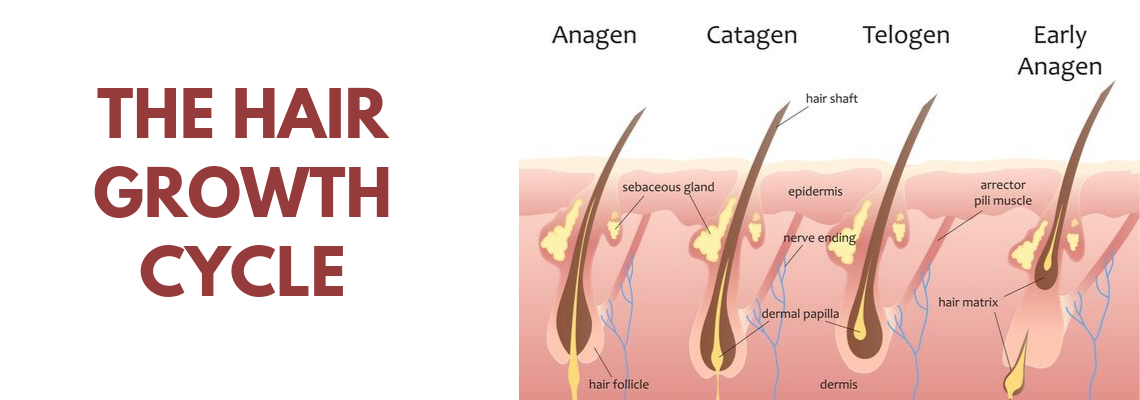One of the most common questions we get here at Regrowth Club, is if hair regrowth can occur if there is no hair left in the affected area?
To better answer this question, we think it is important to first understand the hair growth cycle. In this post, we will dive into the different phases of the hair growth cycle and how this relates to hair loss and treating it.
Hair grows from the follicle/root, which is underneath the skin. The hair is first fed nutrients by the blood vessels at the base of the follicle. This feeding gives the hair the proper nourishment it needs to grow. Between starting to grow and then falling out, each hair passes through four stages known as anagen, catagen and telogen. Each hair on the head can be at a different stage in the growth process at any given time.
Over time, the length of the anagen stage decreases, causing hair to become weaker. This is how hair loss starts and why it is important to ensure you intake the proper nutrients to maintain healthy growing hair.
THE FIRST PHASE
The Anagen Phase (The Growth Phase)
In this phase, the hair begins to grow at a rate of approximately 1cm per month. The growing phase lasts between 2-7 years and determines the length of our hair. Genetics will typically determine how long your hair stays in this phase.
THE SECOND PHASE
The Catagen Phase (The Transitional Phase)
During this stage, the hair follicle starts to shrink to about 1/6th of its original size, and detaches from the dermal papilla (the blood supply). This process lasts for about 2 weeks. It is in this phase that your hair follicle eventually dies.
THE FINAL PHASE
The Telogen Stage (The Shedding Phase)
In this final stage, the hair follicle stays dormant or rests. This phase can last between 1 – 4 months. During this time 10 – 15% of your hair follicles stay dormant. Once this phase ends, your hair follicles will start to regenerate new hair growth. This new hair growth then pushes out the older hair causing it to shed.
NOTE: If hairs enter the resting phase too early, excess shedding and noticeable thinning can occur.
FACTORS THAT INCREASE HAIR GROWTH
Now that we understand how hair grows, it is also important to know the factors that increase and decrease hair growth.
Hormones: Hormones affect hair growth in men and women differently. Female hormones generally have a more positive effect on the growth of hair, verses male hormones that typically have a negative effect. Hormonal issues like diabetes and thyroid issues lead to stunted hair growth which eventually causes hair loss.
Genetics: Genes play a crucial role in the growth of hair in terms of length, texture, and strength. While you may be predisposed to certain hair issues, many are treatable and can be reversed over time with proper medication.
Stress: Stress is one of the main factors which lead to hair loss. Stress can come from external factors like work, relationships or finances. It can also be affected by internal stress like illness or mental health issues.
Medications: There are many medications out there, known to have adverse effects on hair growth. Generally, these medications include antidepressants, antibiotics, and vitamin A derivatives.
If you have severe hair loss, we recommend adding the Let’s Regrow system to your hair care routine as it contains all of the necessary products to reverse the effects of hair loss and stimulate new hair growth. The system is designed to improve your overall hair health.
Keep up with regular use and in only a few months, you could see a brand new head of hair!
(Let’s Regrow is also available for women here: https://www.regrowthclub.com/product/lets-regrow-for-women/)-




